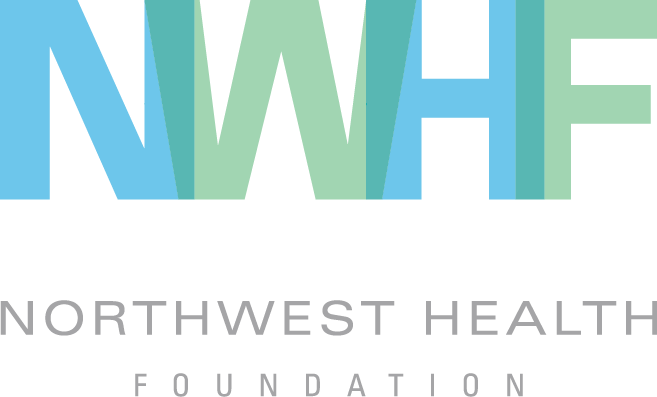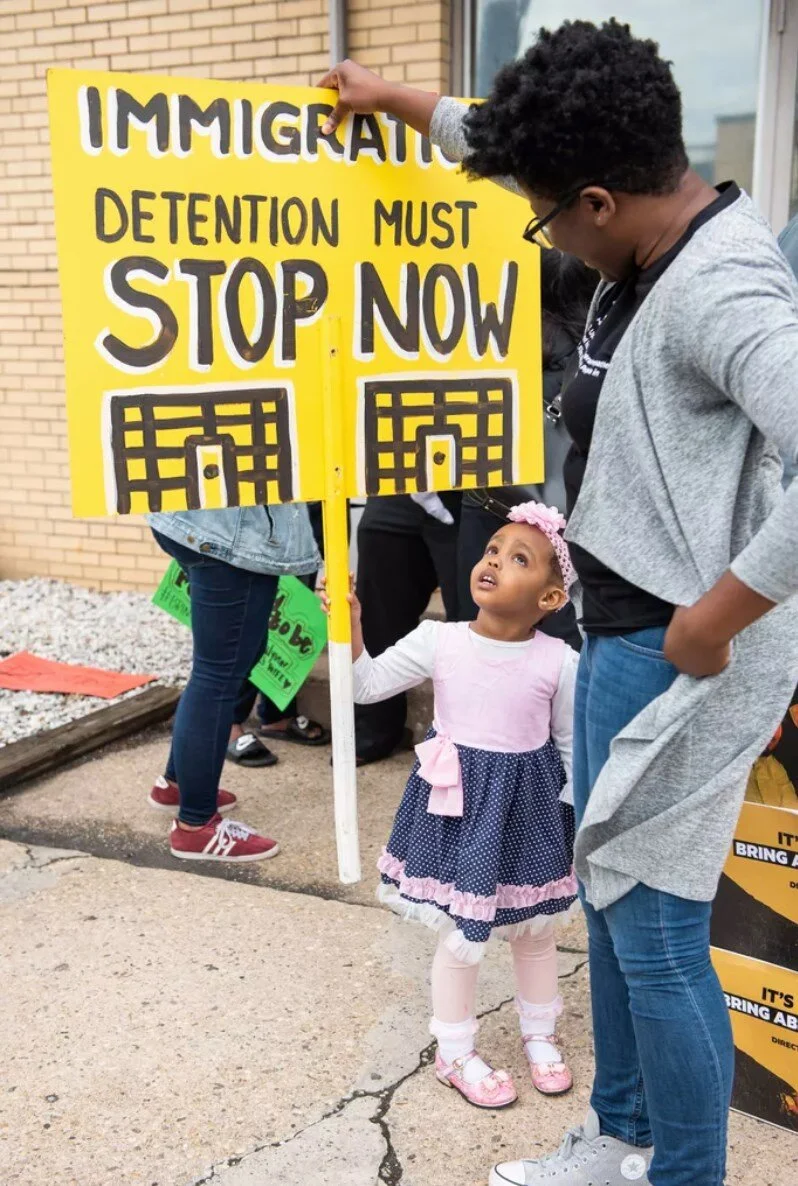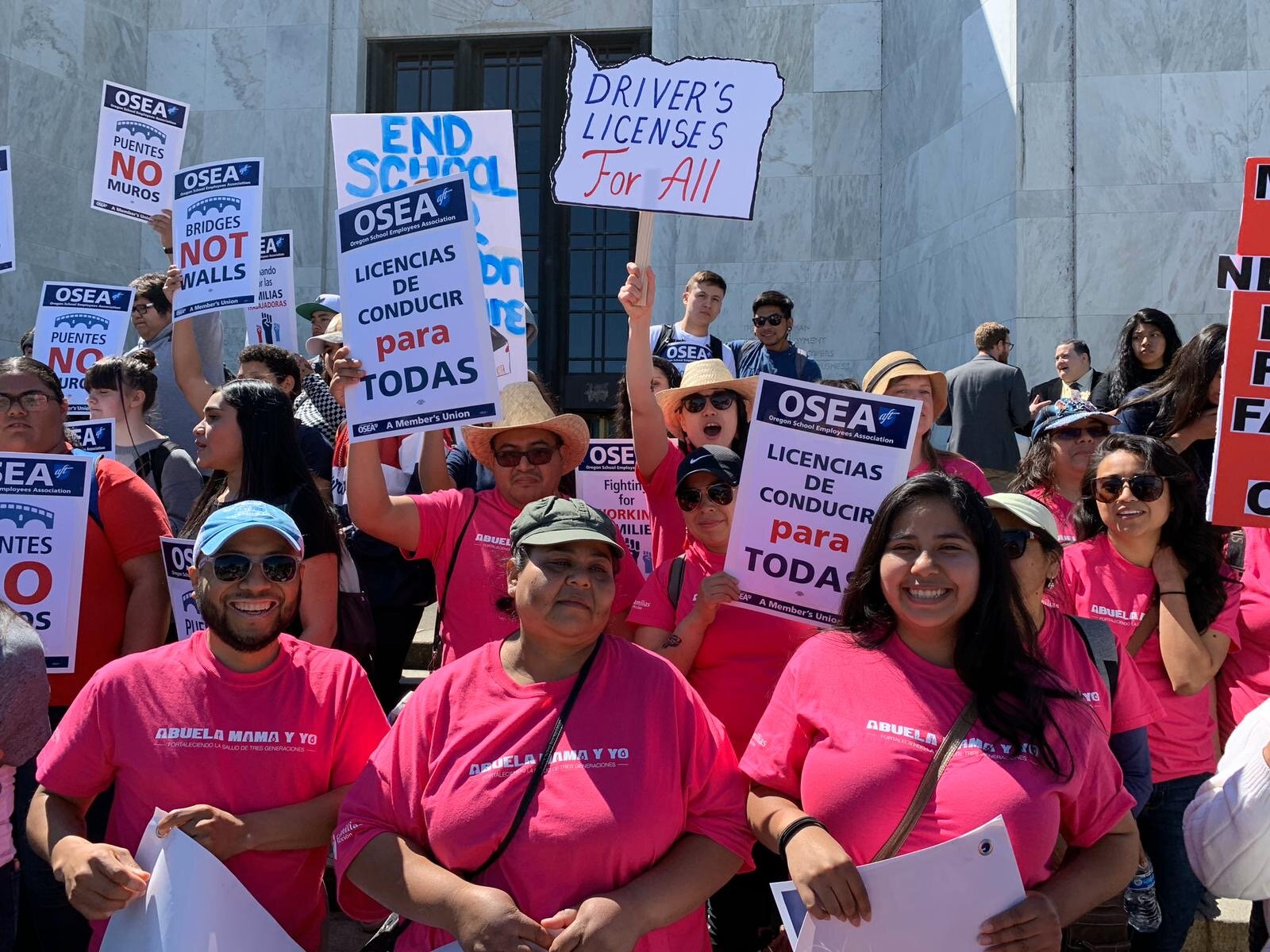HB+HC Community Leaders: Where Are They Now?
/As 2020 wraps up, so does our Healthy Beginnings+Healthy Communities (HB+HC) initiative. We at NWHF are so excited to have witnessed the incredible growth of community leaders over the last five years. We know HB+HC played only the tiniest role, if any, in that growth. And we know that leaders don’t belong to any one Collaborative or organization; they shift and change how they show up in movements over time. In the five short years of HB+HC, many Collaborative members transitioned to new roles within and outside the HB+HC Cohort. Whether they’ve moved on to new jobs or grown within their organizations, we think all of these leaders deserve recognition.
Unfortunately, we don’t have the capacity to contact all of the incredible participants in HB+HC, so we’re only highlighting a few. It’s important for us to note that a few leaders can never represent the full brilliance of BIPOC communities throughout Oregon and SW Washington!
We asked each community leader:
What were you doing five years ago, in 2015?
What are you doing now?
Any plans for 2021?
Diana Avalos-Leos (Healthy Communities, Healthy Futures)
I was serving as the Operations Manager for Healthy Living Collaborative of Southwest Washington.
I’m working in the Washington State Department of Health on a COVID-19 vaccination and care coordination project to support health jurisdictions who are working with community-based organizations to ensure people are supported during quarantine and isolation.
Nine years ago I founded Clark County Youth Leadership organization, which provides advocacy, leadership, mentoring and after-school programming for BIPOC youth and their families. 2021 will be our 10-year anniversary, and we will continue to scale to provide leadership and networking opportunities for BIPOC youth and families.
Karla Castaneda (Youth Equity Collaborative)
I co-developed a youth leadership cohort that focused on reproductive justice and developed another that focused on education. These cohorts were made up of young passionate humans, and I learned so much from their curiosity, directness and drive. I was able to take young people to advocate in Salem for reproductive health, education, transportation and housing. Young people were taking over the legislative session by testifying, rallying and showing up. All this, plus trying to finish my freshmen year of college.
I’m currently working at Verde as their Finance and Human Resources Coordinator. I’m learning a lot as I dive into numbers and policies. I question why things are and work with a team that is curious and open to new possibilities.
Not sure yet. I’m not planning anymore, I’m just seeing where life takes me.
Andrea Gonzalez (La Voz de la Comunidad)
Five years ago today I was pursuing my bachelor’s in social work and struggling to navigate an educational system as a first generation college student. In 2017, I began my work at the Lower Columbia Hispanic Council, now Consejo Hispano, where I spent the following three years working with the community I grew up in. Through our work at HB+HC, not only did I get to work alongside local North Coast community leaders, but also leaders and organizers from all over Oregon and Washington!
Back at it y'all! I am currently pursuing my master’s in social work while working and interning at the Northwest Regional Education Service District. My role there is as a Family Engagement Specialist in the Migrant Education Program for Tillamook County. I'm very excited to be working with a new community, and although it can be difficult at times, and I have had to get very creative, relationship building with this community has been gratifying and vital during pandemic times.
After 2020, I think my only real plan is to survive and thrive, graduate this spring and continue working with communities in the North Coast. As we struggle to address the challenges and barriers that have been highlighted in this pandemic, I reflect on the work we have done and the work still to come in our communities.
Jenny Lee (Racial Equity Agenda)
In 2015, I was working in Honolulu, Hawaii at my first job after graduation. During the legislative session, we built a coalition to pass driver licenses for all, which was such an honor to be a part of. But I was eager to come back to my home state of Oregon, so that fall I moved back and started a new position convening the Oregon Housing Alliance.
After working as the Advocacy Director at the Coalition of Communities of Color (CCC) and then in the same role at the Asian Pacific American Network of Oregon (APANO), I am back at CCC as the Deputy Director. As Deputy Director, I work to support CCC's programs, organizational development and coalition engagement to build power to take collective action for racial justice.
I am excited to build out CCC's affiliate 501(c)(4) and collaborate with our growing team as we work for systemic change. In 2021, we will be building a coalition to advocate for a more inclusive democracy in Portland and work with communities to develop policies that center BIPOC voices. From there, we will advocate at the Charter Review Commission to rethink our form of government and how we elect our lawmakers, and build a long-term campaign to win the changes we want to see at the ballot.
Amanda Manjarrez (Racial Equity Agenda)
Five years ago, I was starting my third year at Lewis & Clark Law School, which is what originally brought me to Portland, Oregon.
Today, I am an active member of the NM State Bar and the Director of Public Policy and Government Affairs at Foundations for a Better Oregon. At FBO, we work with partners in community and across sectors to reimagine how Oregon supports every child to learn, grow and thrive.
We’ve been working closely with a coalition of community-based organizations to develop a shared 2021 legislative agenda focused on advancing racial equity in Oregon’s education system. Most of my time will be spent advocating for that policy agenda along with our community partners during the 2021 Legislative Session. I'd also really like to travel and to hug friends and family again.
Dolores Martinez (Eastern Oregon Latino Alliance for Children & Families)
Five years ago I was working as a housekeeper in a hotel and got my promotion as head housekeeper that year, without any knowledge in technology or the English language, but with a lot of passion and motivation to learn. In 2015, I was registered in a toys for tots program that EUVALCREE provides. I never thought that one day, two years later, I was going to be doing the same thing, but in a different way, registering people in the same program that helped me.
In February, I will celebrate four years being part of EUVALCREE as a staff member. Now, I'm the Director of Community Engagement, as well as an application assistant for OHP (Oregon Health Plan). Honestly I never imagined learning what I have learned, meeting many people, learning computer skills, improving my English, working in different programs and being able to help and provide support to my community. I am really a different person than I was back in 2015 and am grateful for all the people that have supported me in my growth. I love being part of the changes in my community. I love what I do.
Fight my fears, be more confident, learn more, practice my English more, keep growing so that way I can support more, participate more, be the voice of my community, keep my motivation, and be the best model to my family!
Minerva Moulin Alvarez (La Voz de la Comunidad)
I was running my cleaning business.
I am working now for Consejo Hispano. I am a Civic Engagement Coordinator.
My plans for 2021 are to keep serving our minority communities and be the voice for those who can’t speak and are oppressed by people in power.
Ophelia Noble (Healthy Communities, Healthy Futures)
As I reflect on 2015, I think about hurt, trials and tribulations of being “priced out” of my hometown (Vancouver, WA), moving my family to Kelso, WA and experiencing the worst forms of racism that I have experienced in my life. From receiving a three-page letter from an unknown source telling me my family needs to get out the town to a local SSD worker telling me they don’t want someone like me contracted to become a payee for folks receiving SSI/SSD payments (although the agency was in desperate need of payees), to my children experiencing micro and macro aggressions on a daily basis in the education system, community, and health care system. Seeing “CLAN” acronyms in the school (meaning Citizenship, Leadership, Advocacy, Nobility), but set in the context of the community; seeing MAGA hats on children and Confederate flags on trucks parked in the school lot, to Confederate insignia on hats, belts, etc. Inevitably being called a ni*** on many occasions. Unfortunately, this reflection is not seamless, as I don’t think I have found a way to process it any meaningful way other than trauma.
As a member of the HB+HC initiative, I was able to literally and figuratively take an emotional break from the trauma, traveling to different areas in Oregon to see the ways in which communities of color were exercising activism, services and systems change work, seeing amazing BIPOC-led health care services, food banks, community centers, relationships with political leaders and thought bubblers. There seemed to be a constant theme that I circled back to: “It all started with activism in one way or another a need to lift up the voices of Black and Brown folks impacted by systemic racism in all its forms from, institutional to interpersonal and internalized, from microaggressions to macroaggressions.” I was also able to sit in deep supportive, patient and caring respect as I began to regain my own ability to trust again. I distinctly remember sitting in a session around what it may take to build 501(c)(3)/(c)(4) infrastructure in SWWA and having an emotional reaction almost to tears as I contemplated all the ways I could fail my community, the potential loss of friendship and connection to community. Among other thoughts, more importantly I felt again, I began thinking about the possibilities in life again. I began dreaming again a state of awareness that I had lost just two years prior. I was able to be surrounded by BIPOC strength, courage, patience, love, awareness and SUPPORT!
Five years later, and I am now supporting community building out the necessary tools to receive the same care I received as I navigated one of the most difficult times in my life. I am helping to build out an equitable community-based, culturally specific CHW Program, uplifting the spirit of organizers and activists, and supporting infrastructure development of the first 501(c)(3)/(c)(4) sister organization led by community, in community, while also supporting the development of a multicultural center. I am working alongside commUNITY to ensure social, economic, environmental and political justice (equity). This is no longer a quiet conversation behind closed doors. I am personally building up the courage to make a political run in my hometown to work within the system to make change!
Denise Piza (Let’s Talk Diversity Coalition)
Five years ago, in 2015, I was really delving into the work with the Let's Talk Diversity Coalition as an Outreach Coordinator. We were working hard at facilitating equity, diversity and inclusion trainings in Central Oregon, along with supporting work with Juntos and facilitating the workshops for families in Culver. At that time I was also sitting on the board of our school district's ESD and Kids Club. We had a lot going on at the Coalition, but also in my family. I was pregnant at the time with my now four-year-old daughter, so there were a lot of important things happening. I was able to connect with some amazing leaders in our community and had the opportunity to collaborate on many projects that positively impacted our communities. I actually connected with many folks that I currently have the opportunity to work with in various capacities through the HB+HC Collaboratives.
Currently, I am transitioning to a new position with Oregon Health Authority and took a little break before getting started there. I am really excited to join the team and get started. Also as many of us are, I am working from home and supporting my children and my nieces and nephews with online learning through this pandemic. This year has definitely presented us with new and different challenges.
For 2021, I am looking forward to supporting my eldest in his last year of high school and getting him to graduation. My son was the reason I became so active in advocacy work and being there for him in this important milestone is going to be a priority. I also hope to continue to build with other community leaders on a lot of the work we have done together since I moved to the Willamette Valley.
Jaylyn Suppah (Let’s Talk Diversity Coalition)
I was working at LTDC going into year two, feeling more comfortable in my job as the Native American Outreach Coordinator. Before I started working for LTDC, I was a volunteer for the organization. I was learning a lot and working in partnership with my tribe and community. I started learning more in depth about advocacy, grassroots organizing, leadership and community work. I also began my work as a cultural awareness facilitator and trainer. The focus of my work was the Papalaxsimisha program, which I along with the full support of OSU Open Campus in Madras, created and was hosting our first cohort of the program. It was one of my toughest years as I became a single mother raising two children ages two and four. I also got my new home on the reservation late in the year, and I was so grateful. This is the year I really started on my healing journey as a woman, a mother and community leader.
I am raising two beautiful children who are homeschooling this year due to COVID. I am a student at The Evergreen State College in the Masters of Public Administration Tribal Governance program. I work for my tribe, the Confederated Tribes of Warm Springs, as the Community Planner in Health & Human Services. Our tribe is one of the Regional Health Equity Coalitions throughout the state of Oregon advocating for equity, decolonizing practices and policies and how to uplift our traditional knowledge and ways of being. I also oversee the Papalaxsimisha program and Family Resilience program. I serve on several boards and committees such as the Governor’s Health Equity Committee, National Indian Education Association and MRG Foundation.
The biggest plan for 2021 is running for school board for the Jefferson County 509-J School District in May.
Kathy Wai (APANO VOTE Network)
I was the Policy and Civic Engagement Manager at APANO from 2014-2017. I then eventually became the Field Director from 2017-2018. During my time at APANO, I managed year-round civic engagement training, outreach and political education activities to increase voter participation in underrepresented communities (specifically API immigrants, new citizens, elders, and college-age students). I also led the HEART Campaign (Health Equity and Reform Team) to pass health equity legislation statewide specifically for COFA/Pacific Islanders, newly arrived immigrants, and helped support the passage of the Reproductive Health Equity Act through organizing town halls and training community members on legislative lobbying.
Through my involvement with HB+HC, I also had the opportunity to organize the VOTE Network with 12 Asian and Pacific Islander organizations to help build their capacity to conduct culturally specific voter education, registration, phone banking and policy advocacy for year-round 501(c)(3) electoral efforts.
I ran for an open seat on the North Clackamas School Board in 2017 and became the youngest woman of color to serve on the Board. Since then, I've been involved with the creation of the Oregon School Board Members of Color Caucus, serving on the executive leadership team and representing the Clackamas Region. I've also been appointed by Governor Kate Brown to serve on TriMet's Board of Directors and am currently serving on NARAL Pro-Choice Oregon's PAC Board. Aside from my public service roles, I've worked most recently as the Census Justice Director for Oregon Futures Lab and worked with our BIPOC leaders to get our communities accurately counted in the 2020 Census.
I want to travel in 2021, since I wasn’t able to in 2020.














































![What’s Waiting for me in SoCal! [Eddie taking a selfie with ten of his family members.]](https://images.squarespace-cdn.com/content/v1/52b20be1e4b09f7904dfa46f/1568835048222-GIYAISMYLCQM21KN404X/FamBam.jpg)